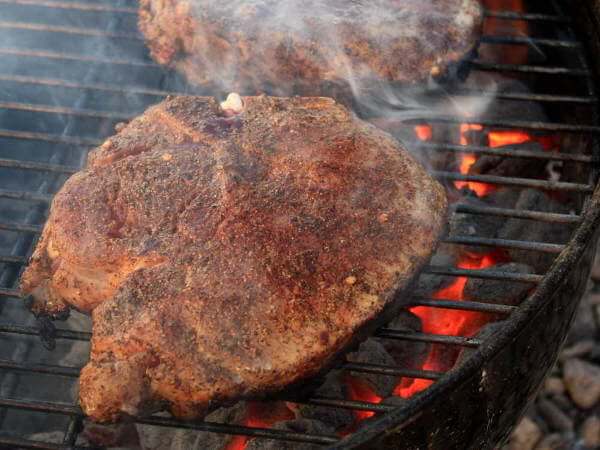How To Smoke Pork - An Overview of Swine Smoking
An accomplished smoker chef knows how to smoke pork ribs, pork loins, pork chops and butts. The fattier cuts of pork are very forgiving, meaning it's really hard to overcook them. Leaner cuts have to be cooked with care, because if they go much past the done temperature, the meat becomes dry and tough.

Smoke Woods for Pork
Smoke woods that work well with pork include hickory, pecan, apple and cherry. But don't limit yourself to those choices. Experiment with other woods, or combinations of other woods for new, unique flavors.
The Benefits of Brining Pork
Pork is one red meat that really benefits from brining. Salt and sugar in the brine change the texture of the meat. The protein structure is modified in a way that causes the meat fibers to hold on to moisture more efficiently, creating a more juicy and tender eating experience.
A simple brine of 1/2 cup non-iodized table salt and 1/2 cup sugar dissolved in 1 quart of water is a good one to start with. The brine should be kept refrigerated at all times, and never vary out of the 36-40 degree Fahrenheit range.
If the temperature drops below 36 degrees the meat won't brine properly. And above 40 degrees, the meat will begin to spoil.
Smaller, thinner cuts require less time in the brine, while larger cuts need more. Pork loins, rib roasts and other large cuts of pork can be brined overnight before being smoked.
It's not necessary to brine fatty cuts, like pork shoulders, picnics and butts. The internal fat in those is enough to keep them tender and juicy.
Herbs, spices, fruit juices, beer or wine can be added to the pork brine to add interest and flavor. There's a lot of room for experimentation when it comes to creating a brine!
How to Smoke The Lean Cuts
Pork loins, tenderloins, loin chops and even country style ribs are best when the internal temperature just reaches 160 degrees Fahrenheit. If the temperature goes over that point it will begin to lose moisture and become tough.
These cuts do well when smoked at 250-275 degrees, since they don't need the low and slow style of cooking that the fattier cuts require. To cook these, preheat your smoker, then add the smoking wood. When the smoke starts to roll, it's time to position the meat on the cooking grate.
Chops and pork tenderloins will take from 45 to 90 minutes, depending on the thickness of the meat and the actual temperature of the smoker. Remove the pork from the smoker when it reaches 155 degrees. Residual heat will cause the internal temperature to rise to 160 as it rests for 20 minutes before it's served.
Larger lean cuts -- pork loins and loin roasts -- will take from 1 to 3 hours, or more, to reach 155 degrees. Again, as the meat rests after being removed from the smoker, the temperature will continue to rise to 160 degrees.
Smoking Other Cuts of Pork
When smoking pork shoulders, butts, picnics and ribs, the ideal internal temperature is above 160 degrees. For shoulders, which have both lots of fat and connective tissue, the temperature can reach as high as 205 degrees with no ill effect.
As the temperature of the meat slowly rises, the internal fat and some of the connective tissues soften and liquefy. The melted fats and juices permeate the meat, making it both tasty and juicy.
These large cuts do best when smoked at around 225 degrees for as long as it takes. At that temperature, the meat can be smoked for a long time, and that's what it takes to break down the connective tissues. At higher temperatures the meat will get done, but it'll be less moist.
It can take from 1 to 1-1/2 hours per pound to smoke the big hunks of pork. Butts, picnics and shoulders are usually seasoned heavily with a dry rub seasoning.
To help the dry spices stick to the meat, it's popular to slather the whole piece of pork with yellow mustard before applying the rub. The flavors hang on tight, and instead of being overpowering, the flavor of the mustard somehow fades away.
There are lots of other cuts of pork that can be smoked, and with most it's as easy as brining or seasoning the meat, then smoking at 225 until tender. Try smoking some fresh ham hocks sometime, and find out just how good a pot of beans can taste!
- You Are Here: Home >
- Tips >
- How to Smoke Pork
